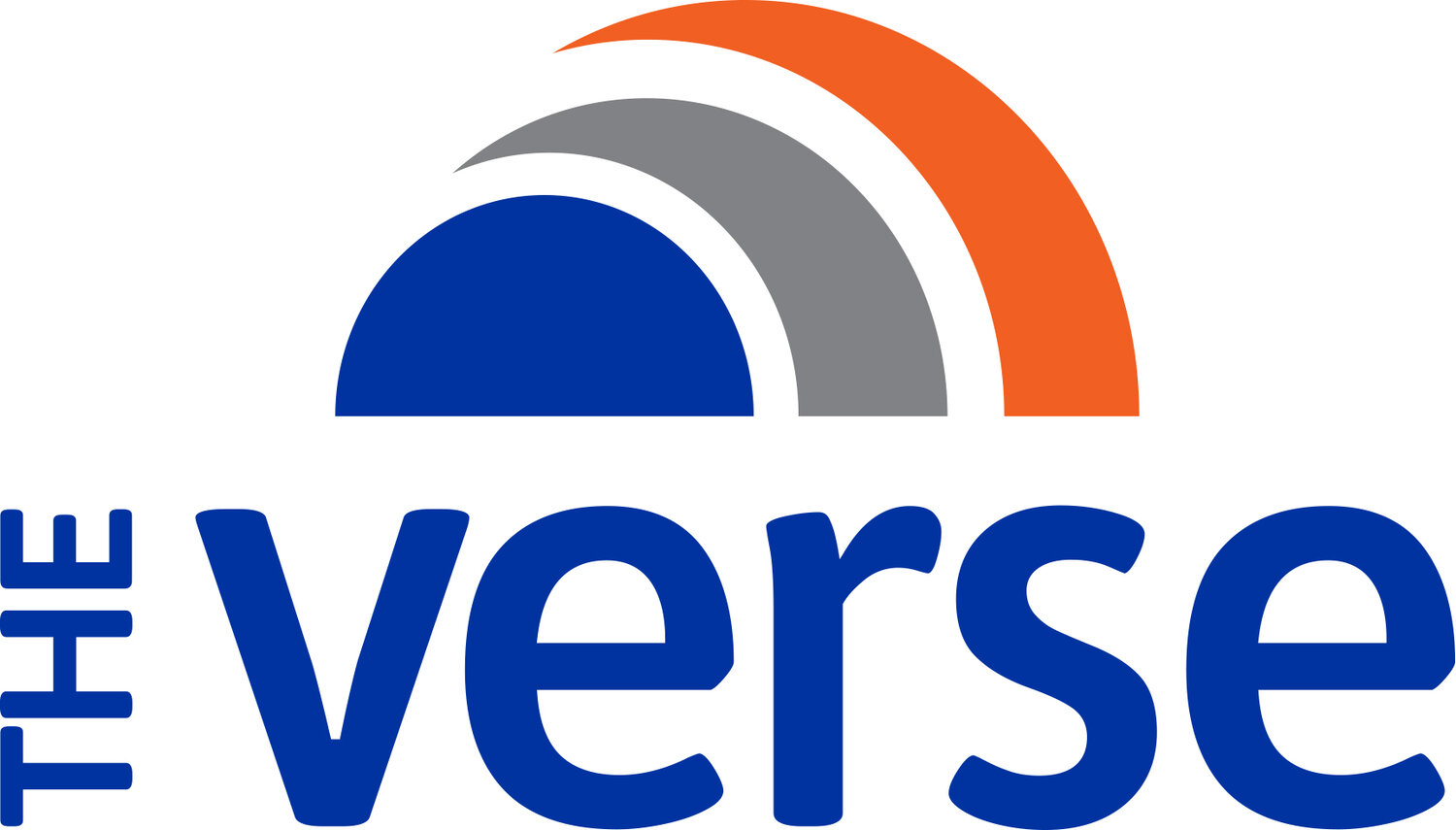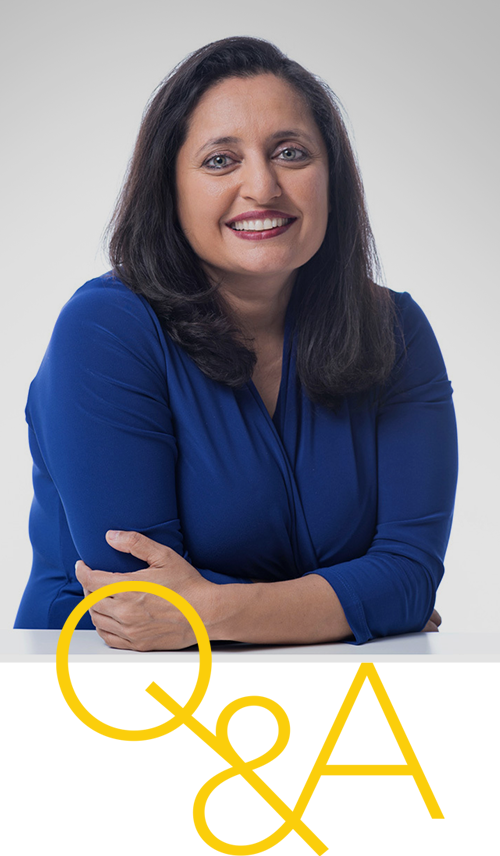Sonal Shah on Building AANHPI Community & Social Impact
Sonal Shal
Daughter, Sister, Best Aunt and Friend, Fearless and Fierce, Lover of All Sports
What's the best thing that happened to you in the 80s?
I learned how to play tennis, and it has been my thing when I have free time and when I need a break.
What’s the weirdest thing you keep in your bag?
Safety pins. Always. They always come in handy, just when you think you may never need them. And randomly, for various things. I have small ones, large ones, tiny ones. They are all useful.
What’s something you refuse to give an F about?
I really don't care what people say about me. Just don't. Done. And I worry even less now about what kind of shoes I wear anywhere.
Sonal Shah: Building belonging for Asian Americans
Did you have any early concept of what you wanted to be when you grew up?
I emigrated to Jersey City, New Jersey, with my parents when I was four. But from first grade onwards, I've been living in Houston. If anyone knows Houston, it's like a series of various suburbs—I grew up in one of them.
Honestly, I did not have a clue. There were so many things being thrown at me and my parents wanted me to be a doctor or an engineer. I sucked at both of those things. Biology was not my thing and the drawing of blood made me faint. But I was very lucky. My Dad just let us explore. And his comment was always, "Go do something and then figure out what you're good at."
To be fair, I don't think I knew what I was actually good at until my first job. Or more accurately, I figured out what I was not good at. I was at Accenture (then Andersen Consulting). I was not good at PowerPoints. And I was not a consulting type. And so when I left consulting, I thought, "Great. I don't ever have to think about that again."
What I really cared about was economics, so I got my master's in it. But, actually it was through my first job in Treasury that I really figured out that I loved applied economics, not just economics. And it wasn't even a context I grew up with in Houston. Nobody told me I could do applied economics versus economics. It was not even a thing.
I'm just lucky that I got to explore. My heart goes out to a lot of these young kids, because when I went to college, I didn't declare a major. I just applied to a university and then I figured out what I like to do.
Who or what brought your focus to social impact work?
Part of it was just how we grew up—my parents were very involved in the local community. At a young age, it was not if we could join our parents—it was a requirement. It was ingrained in us.
The second thing is that I got to live in Sarajevo after the war in 1995. It was just one of those random things. I was working for the Treasury when my boss said, "We're looking for someone that wants to move to Sarajevo." I was 26 and I thought, why not? Then going there and knowing that I could help to figure this out. I could define my value. I didn't know how to do everything, but I could figure that out and sort of got hooked on it. I felt I could contribute.
My siblings and I even started a nonprofit in 2001. We wanted to offer a service for people of Indian origin to learn about their heritage through service in India. Every time we went and lived in the communities, it just felt like the right thing to do. It’s where my heart is and I'm so glad that I have been able to make a career of it.
Obviously, "social impact" gets used a lot, but how do you define it?
The way I think about it is from micro all the way to macro—in everyday life, what can you do? It’s all of those little micro things we do, whether helping someone cross the street, or someone trying to put something in their car—all those little things add up. Then there's the slightly bigger things like how do I volunteer for an event or in an organization? Even if it's just once a week or once a month, that time, that connection, that proximity to your community matters.
Then there's the bigger things with social impact. If I work somewhere, how can my company build products that can have an impact on the environment? How do we quantify impact at the global and national levels? I've been in all of those, but I don't think any one by itself is enough. I don't think just quantifying impact at the global level of, say, your carbon footprint is great if you, yourself, aren't even thinking about it on a daily basis. We have to do both. I worry sometimes that the social impact conversation gets magnified to corporations and large institutions and we forget that when each of us does our little bit, it adds up to a lot.
There are multiple diverse cultures under the AANHPI banner—what’s helpful about this construct, and what gets lost?
What I love about this construct—and especially this AANHPI heritage month—is that it allows us to celebrate other people's cultures. Even as an Indian American, I get to think about how the Chinese Americans celebrate their culture, how the Korean American community does it, the Vietnamese American community. What are foods I might want to try? What practices can I learn from? The month allows you to explore and learn, even within this large banner of 40 ethnicities and 50 languages.
Speaking as an AANHPI person, it allows me to be proud of my culture and proud of who I am. And recognize that it's okay for me to share with others who we are, what we do and why we do it. Too often, when I was growing up, we were asked to just assimilate. Having pride in who we are matters, and gives a sense of belonging.
The challenge is that sometimes we only look at the larger groups such as Chinese Americans and Indian Americans. We forget that there are Southeast Asians from Cambodia, Vietnam and Thailand, other countries we may not think about and make an effort to understand. The other thing I would caution is, don't assume because you've met one Asian American, you've met another Asian American. Recognize that each person has a different story and all of our stories vary radically. Just ask people about their unique story.
Tell me about founding The Asian American Foundation. If you’re celebrating success five years from now, what will have happened?
Around 2020 or 2021 when we saw a lot of incidents of hate against Asian Americans, we wanted to set up an organization that lifted up the voice and the community's aspirations. When you look at the mission, it's to create a sense of belonging while also addressing the hate. And that sense of belonging in my view is probably the most important and aspirational piece—how you create a country where everyone belongs.
Because we're such a diverse community, belonging becomes a recipe for many communities to come together. Other organizations have been doing this work for many years, and under much harder circumstances, to be fair. But when we started looking at the data, we found that less than 0.5% of foundation resources were going to Asian American, Native Hawaiian or Pacific Islander communities. And less than 1% of corporate resources. This is despite the fact we are 7% of the population and the fastest-growing population in the US. So we felt it was important to galvanize corporations, foundations and individuals to really invest in these communities. We didn't ask for the money ourselves. In fact, when we launched the foundation, our board put in $125 million itself and we raised a billion dollars.
We pushed corporations and foundations to give directly into communities and organizations. We felt we could bring that impact together because of our board and our advisory council, and use our voice to actually elevate and make sure these communities were being heard. That's everything from money to portrayals of AANHPI people in storytelling—not just in newspapers and articles, but in movies and in TV shows, in advertisements. And we're seeing a lot more representation across the board.
I think the goal would be in five years to say that the AANHPI communities are seen and are being heard. And, importantly, that we're seen as Americans, not outsiders. Too often, we're seen as “the other,” as foreigners, but not as Americans—if we’re even being seen. So if we're seeing Asian Americans, Native Hawaiians and Pacific Islanders as Americans contributing to America, we will have achieved a big milestone.
Many of our readers are leaders of their communities, companies and organizations. For both members and non-members of the AANHPI community, what are one or two things they could do to better support their fellow citizens?
To the AANHPI population that are in these communities, I would say make sure that if you have employee resource groups or other ways to pull communities together, make sure you’re represented within your company or organization. You can bring people together and say, "This is what we need and want.”
The second thing I would say to our communities is let's link up to the other communities also. It’s not in isolation—ourselves as just AANHPI—but together that we’ll make belonging work.
To other communities on the outside, don't overlook the Asian American population. Sometimes we fall into the model minority myth, and you think we're already well-versed in everything. And that is not true. Not everyone's story is that story you may have heard or read about. Many people have very difficult stories. It's important to ask questions about people’s cultures. Sometimes we see someone as just like us, so we don't think about asking about the cultural connotations.
Last, I would urge people to take the bystander intervention training course. When you see something happen to someone—whether it's bullying or physical or mental abuse—it’s important to be helpful and supportive. Don’t just be a bystander.

